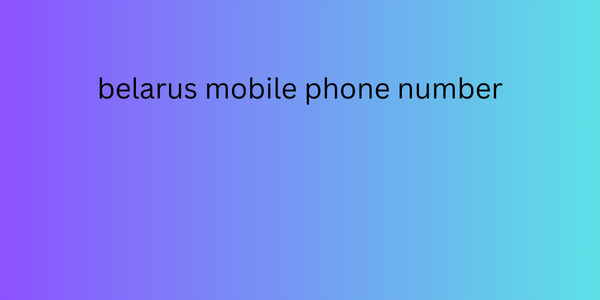Visual Data Modeling: Visually mapping data relationships and structures.
Posted: Thu Dec 05, 2024 7:10 am
Once you have defined your basic data model, you can visualize the relationships between these entities, which is where the Visual Data Modeling feature in the platform comes in.no-codeTake a role
Visual tools for data modeling
Tables: You belarus mobile phone number typically use tables to define and view your data model. Each row represents an instance of an entity (such as a single user), and each column represents an attribute (such as a user's name or email address).
Entity Relationships: On Platformno-codeIn most cases, you can link tables and define data relationships, such as one-to-many or many-to-many relationships. This can be represented visually using lines or arrows that connect the different data tables.
Using visualizations of your data allows you to easily map interactions between data entities, which is important when setting up things like user permissions, workflow rules, or automated actions.

Business logic and automation
One of the platform’s most powerful featuresno-codeIt is the ability to set up complex business logic and automation. Business logic defines how your application behaves in response to different inputs or actions, and automation simplifies repetitive tasks.
Business logic without coding
1. Business Process: Automated workflow configuration to manage tasks and decision logic.
A business process is a series of steps or actions that your application must perform based on user interaction or other triggers . For example, if a user submits a form, the system might automatically send a confirmation email or update a database.
On the platformno-codeBusiness logic is often configured through automated workflows or conditional actions. These workflows define what happens when certain events occur.
Visual tools for data modeling
Tables: You belarus mobile phone number typically use tables to define and view your data model. Each row represents an instance of an entity (such as a single user), and each column represents an attribute (such as a user's name or email address).
Entity Relationships: On Platformno-codeIn most cases, you can link tables and define data relationships, such as one-to-many or many-to-many relationships. This can be represented visually using lines or arrows that connect the different data tables.
Using visualizations of your data allows you to easily map interactions between data entities, which is important when setting up things like user permissions, workflow rules, or automated actions.

Business logic and automation
One of the platform’s most powerful featuresno-codeIt is the ability to set up complex business logic and automation. Business logic defines how your application behaves in response to different inputs or actions, and automation simplifies repetitive tasks.
Business logic without coding
1. Business Process: Automated workflow configuration to manage tasks and decision logic.
A business process is a series of steps or actions that your application must perform based on user interaction or other triggers . For example, if a user submits a form, the system might automatically send a confirmation email or update a database.
On the platformno-codeBusiness logic is often configured through automated workflows or conditional actions. These workflows define what happens when certain events occur.